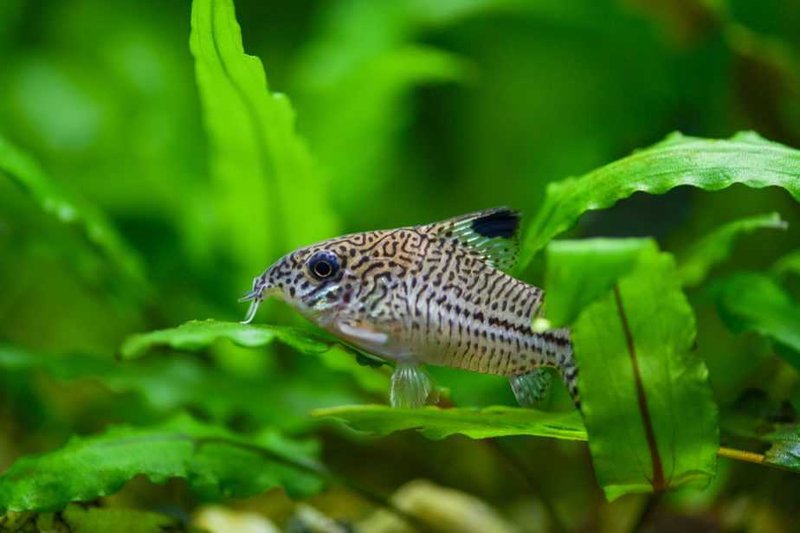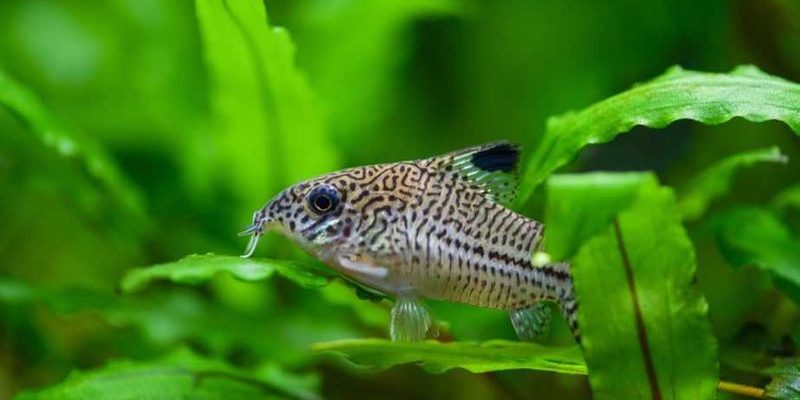
Choosing the right plants is like picking the perfect cushions for your couch. They not only provide a beautiful backdrop but also serve crucial functions, like hiding spots and oxygenation. Similarly, the substrate is like your flooring—it needs to be comfortable and practical for your Corydoras to navigate. In this article, we’ll explore the best plants and substrate options for Corydoras catfish tanks to help you create a thriving underwater environment that mimics their natural habitat.
Why Plants Are Important for Corydoras Catfish
Plants play a vital role in your Corydoras tank. First off, they produce oxygen through photosynthesis, which is essential for all fish, including your little catfish. But it’s not just about oxygen. Plants also create a natural habitat, offering hiding spots and places for Corydoras to roam and explore.
You might be wondering how plants affect water quality. Well, they can absorb excess nutrients and help stabilize pH levels. This means you have a reduced chance of algae blooms and a healthier environment overall. A well-planted tank can also mimic the natural riverbeds where Corydoras typically live, making them feel right at home.
When choosing plants, think about their growth habits. Fast-growing plants like Java moss can provide quick cover for your catfish, while slow-growing options like anubias can add structure to your design. Each plant type serves different purposes, so it’s important to mix and match to create the best environment for them!
Best Plants for Corydoras Catfish Tanks
So, what are the best plants to add to your Corydoras catfish tank? Here’s a list of some fantastic options:
- Java Moss: This is a favorite among fishkeepers. It’s easy to care for and offers ample hiding spots for your Corydoras. Simply attach it to rocks or driftwood, and it’ll start to grow!
- Anubias: These hardy plants thrive in low light and can adapt well to various conditions. Corydoras love to explore around them, and their broad leaves provide excellent cover.
- Amazon Sword: A great choice for a bigger tank, this plant grows large and tall, creating a lush backdrop. Just make sure it has room to spread its roots!
- Cryptocoryne: These come in various sizes and colors. They’re another resilient option that does well in different lighting and conditions, adding a splash of variety to your tank.
Each of these plants has unique benefits. For instance, Java moss grows quickly, providing a safe space for baby fish, while anubias offers stability and is immune to many common plant diseases. You might even consider mixing these plants for a more diverse environment, which can keep your Corydoras engaged and active.
Choosing the Right Substrate
Now let’s talk about substrate—the floor of your aquarium, so to speak. The right substrate is crucial for your Corydoras catfish. They love to forage and dig around, so you’ll want something soft and fine that won’t hurt their delicate barbels.
A popular choice is sand. It’s gentle on their sensitive whiskers and allows them to burrow comfortably. Plus, sand doesn’t trap debris as much as gravel does, making it easier to maintain water quality. Look for aquarium-specific sand that’s free from sharp edges.
Another good option is *fine gravel*. It’s a bit coarser than sand but can still provide a decent environment for your Corydoras. Just ensure the gravel particles are small and smooth, allowing your catfish to navigate without injury.
When layering substrate, aim for at least 1-2 inches thick. This depth allows the plants to root properly and gives your Corydoras enough space to dig. Plus, it creates a layered look that enhances the tank’s visual appeal.
Setting Up Your Tank
Getting your tank set up is one of the most exciting parts of fishkeeping! Once you’ve picked your plants and substrate, it’s time to play designer. Start with a solid plan. Arrange your substrate first, creating slopes or mounds to add depth.
After that, plant your greenery. Place taller plants toward the back and shorter ones in front to create a natural landscape. This tiered look not only pleases the eye but also allows your Corydoras to explore at different levels. Make sure to leave enough open space for them to swim and forage freely.
Remember to rinse your substrate and plants before adding them to the tank. This step removes any dust or contaminants that can cloud your water. Once everything is in place, fill your tank with conditioned water, let it cycle, and monitor the water parameters to ensure a stable environment before introducing your Corydoras.
Common Issues and Solutions
Even with the best intentions, sometimes things don’t go as planned. You might notice your plants struggling or your Corydoras acting unusual. Here are some common issues and quick fixes:
– Plants Not Thriving: If your plants are turning yellow or wilting, check your light levels and ensure they’re appropriate for the plants you’ve chosen. Some may need higher light conditions to grow well.
– Cloudy Water: If your tank becomes murky after setup, it could be due to leftover substrate dust. A water change can often clear this up. Adding filter media designed for biological filtration can also help stabilize water conditions.
– Corydoras Behavior Changes: If your fish seem lethargic or are spending too much time hiding, it might be a sign of stress. Check parameters like ammonia, nitrites, and nitrates. Healthy water conditions are key to happy fish!
You’ll find that troubleshooting is part of the journey. Learning what your tank needs over time is all part of the fun of being a fishkeeper.
Maintaining a Healthy Environment
Keeping your Corydoras tank in peak condition goes beyond just setting it up. Regular maintenance is essential to ensure your plants and fish thrive. Here’s how to keep things in check:
– Water Changes: Aim for a 10-20% water change weekly. This helps remove toxins and keeps levels stable. Use a siphon to clean the substrate during water changes, especially if you have sand; it’ll help maintain cleanliness without disturbing the ecosystem too much.
– Pruning Plants: As your plants grow, they’ll need occasional trimming. Keep an eye on their growth to prevent overcrowding, which can lead to poor water quality. Prune any dead or dying leaves, and don’t hesitate to thin out dense areas for better light penetration.
– Check Water Parameters: Use a reliable test kit to monitor pH, ammonia, nitrites, and nitrates regularly. Corydoras prefer slightly acidic to neutral water (pH between 6.0 and 7.5), so keep that in mind when making adjustments.
Your Corydoras catfish depend on you to create a balanced environment. By staying proactive about maintenance, you’ll ensure their home remains vibrant and healthy.
Setting up a tank for Corydoras catfish can be a rewarding adventure. It’s all about creating a cozy, natural habitat that meets their needs. With the right plants and substrate, these charming fish will flourish and add life to your aquarium. Remember, it’s not a race; take your time selecting the plants and designing your space.
As you watch your Corydoras explore, dig, and play, you’ll realize all the effort you put into crafting their environment was completely worth it. Keep an eye on water quality, maintain your plants, and enjoy the little quirks of your underwater friends. Happy fishkeeping!

